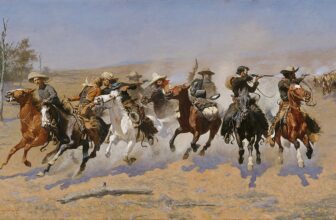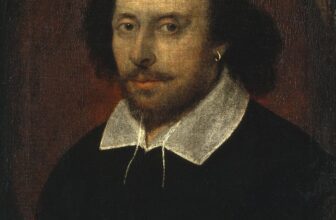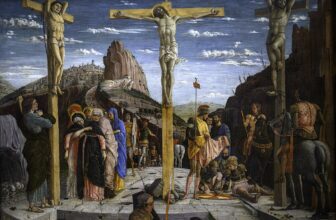
The Story and Meaning Behind the Last Supper Painting
Leonardo da Vinci’s “The Last Supper” is one of the most celebrated and analyzed artworks in history. Painted between 1495 and 1498 in the convent of Santa Maria delle Grazie in Milan, this masterpiece captures a pivotal moment in Christian theology while showcasing Leonardo’s genius in composition, emotion, and innovation. This topic delves into the story behind the painting, its symbolism, and the enduring impact it has had on art and culture.
The Historical Context
Leonardo da Vinci was commissioned to create “The Last Supper” by Ludovico Sforza, Duke of Milan, as part of renovations to the convent’s dining hall. Unlike many traditional frescoes of the time, Leonardo chose to experiment with a combination of oil and tempera on dry plaster, seeking to achieve richer details and tones. Unfortunately, this technique made the painting prone to rapid deterioration, resulting in centuries of efforts to preserve and restore it.
The subject of “The Last Supper” is drawn from the Gospel accounts of Jesus’ final meal with his disciples before his crucifixion. It depicts the dramatic moment after Jesus announces, “One of you will betray me.” This revelation sets the scene for a range of human emotions—shock, denial, anger, and sorrow—that Leonardo masterfully conveys.
The Composition
Leonardo’s brilliance lies in his composition, which draws the viewer’s eye to the central figure of Jesus. Positioned at the center of the long table, Jesus forms a stable triangular shape, symbolizing divinity and balance. Surrounding him are the twelve apostles, grouped into four clusters of three, creating a dynamic interplay of gestures and expressions.
The use of linear perspective enhances the depth of the scene. The vanishing point, located just behind Jesus’ head, aligns with the room’s architecture, directing all focus toward him. This alignment not only emphasizes Jesus as the spiritual focal point but also integrates the painting seamlessly into the dining hall’s physical space.
Symbolism in “The Last Supper”
Every detail in “The Last Supper” carries symbolic meaning, enriching the narrative and theological significance of the scene. Here are some key elements:
- The Bread and Wine: Jesus’ hands gesture toward a piece of bread and a glass of wine, symbolizing the institution of the Eucharist. This act represents the body and blood of Christ, central to Christian worship.
- The Apostles’ Reactions: Each apostle’s response to Jesus’ declaration reflects their character and role in the Gospel narrative. For instance, Peter holds a knife, foreshadowing his act of cutting off a soldier’s ear during Jesus’ arrest, while Judas clutches a small bag, symbolizing the silver he received for betraying Jesus.
- Light and Shadow: The interplay of light and shadow adds emotional depth to the painting. The light emanating from Jesus contrasts with the darker tones around Judas, highlighting the moral dichotomy of the scene.
- Numerical Symbolism: The grouping of the apostles in threes may represent the Holy Trinity, while the number twelve reflects the twelve tribes of Israel and the apostles themselves, foundational to Christian faith.
The Drama of Betrayal
One of the most compelling aspects of “The Last Supper” is its portrayal of Judas Iscariot. Unlike earlier depictions where Judas is isolated, Leonardo places him among the apostles, subtly distinguishing him through posture and symbolism. Judas leans back, clutching his bag of silver, while his head is positioned lower than the others, suggesting moral decline. This nuanced treatment invites viewers to contemplate themes of trust, guilt, and redemption.
Innovations in Technique
Leonardo’s experimentation with perspective, anatomy, and emotion set “The Last Supper” apart from other religious artworks of the time. His detailed studies of human expression and body language breathe life into the apostles, making them relatable and distinct. The dynamic composition breaks from the rigid, hieratic style common in earlier religious art, marking a shift toward the Renaissance emphasis on realism and humanism.
Preservation and Challenges
Despite its fame, “The Last Supper” has faced significant challenges over the centuries. Leonardo’s unconventional technique led to rapid deterioration, exacerbated by environmental factors and wartime damage. Efforts to preserve the painting began as early as the 18th century, culminating in a major restoration completed in 1999. While some details have been lost, the restoration revealed new insights into Leonardo’s original vision, ensuring the painting’s legacy endures.
Cultural and Artistic Legacy
“The Last Supper” has inspired countless artists, writers, and filmmakers, becoming a cultural touchstone beyond its religious significance. Its composition and themes have been reinterpreted in various mediums, from Andy Warhol’s pop art to cinematic homages. The painting also invites philosophical and theological reflections on human nature, faith, and the complexity of relationships.
Leonardo da Vinci’s “The Last Supper” transcends its historical and religious context to become a universal exploration of emotion, morality, and the human condition. Its masterful composition and profound symbolism continue to captivate audiences, making it not just a masterpiece of the Renaissance but a timeless work of art that speaks to the depths of the human spirit.




